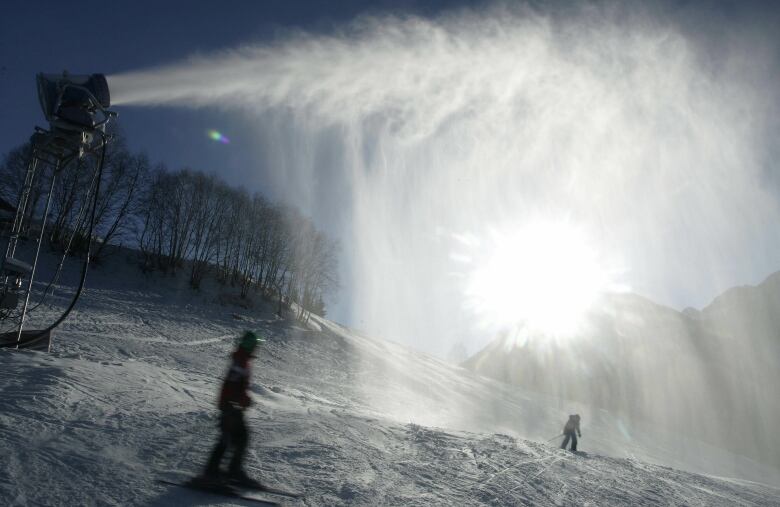Hopi tribe fights ski resort for using treated sewage to make snow on sacred mountain

A U.S. appeals court has told the Hopi tribal nation that it can proceed with its bid to block a local ski hill from making artificial snow.
The Arizona Snowbowl resort has been using reclaimed wastewater from nearby Flagstaff, Ariz., to spray the San Franciscan mountains with artificial snow.
As It Happens host Carol Off spoke with Hopi artist and activist Ed Kabotie about the decision. Here is part of their conversation.
Why is snow so important to you?
In our culture, we have a saying — Paatuwaquatsi, which means "water is life." Or we have a proverb that says, "with one raindrop, the entire universe is renewed."
We're a desert culture so our ancestors have lived on this land for centuries, learning to live within the cycle of the sun and the moon and the water cycles in a desert landscape.
We're also farming people. We don't have irrigation systems. So we're dry farmers dependent upon the answers of our prayers for rain and moisture. Therefore, water is essential to our lives.
And what do these mountains, the San Francisco Mountains, these snow-capped peaks, what do they represent for you and your people?

The snow is not as much as it used to be because of climate change and so the plan for the ski slopes is to make snow, manufacture it from waste water, and then spray it on the San Francisco mountains. What does that mean to you?
First of all, the ski resort has ongoing been in and out of service because we live in a desert landscape and the snow is unpredictable. But the use of reclaimed water on the mountain just to play with the cycles of moisture is, in a sense, in my belief, shaking your first at God.
They say that the water is the same kind of water that has been cleaned enough to put on crops for farmers' fields. It's fine for irrigation, for watering grass or whatever. Why isn't it good enough to put as snow on that mountain?
Well, if you go visit the Arizona Snowbowl, you will find their signage that says, "Don't ingest this snow."

They're saying the Arizona Snowbowl is obviously a good business. It's been there for 80 years. Hundreds of thousands of people are enjoying the recreation, and the snowmaking makes that possible because there isn't so much real snow anymore. What do you say to them?
I say to them that they need to look at the larger context of what is taking place on the Colorado Plateau, as well as in all Indigenous communities throughout the Americas.
There's 500 Standing Rocks in the United States of America, and in all honesty, the Snowbowl is just a small window into what is taking place on our reservations.
We're crying out for many issues, and this is just one of many. So I think it's important that people have a much broader context of what's taking place.
This interview transcript has been edited for length and clarity. For more on this story, listen to our full interview with Ed Kabotie.